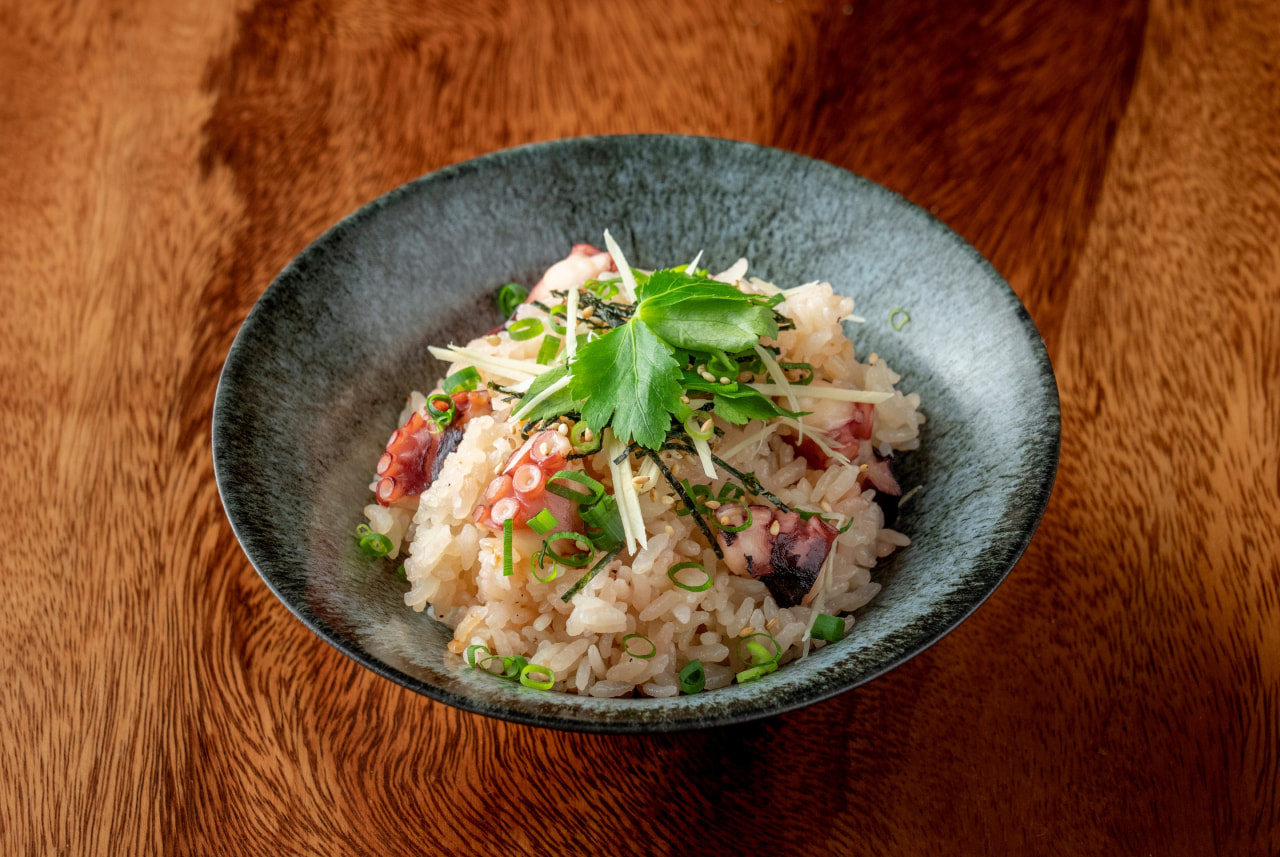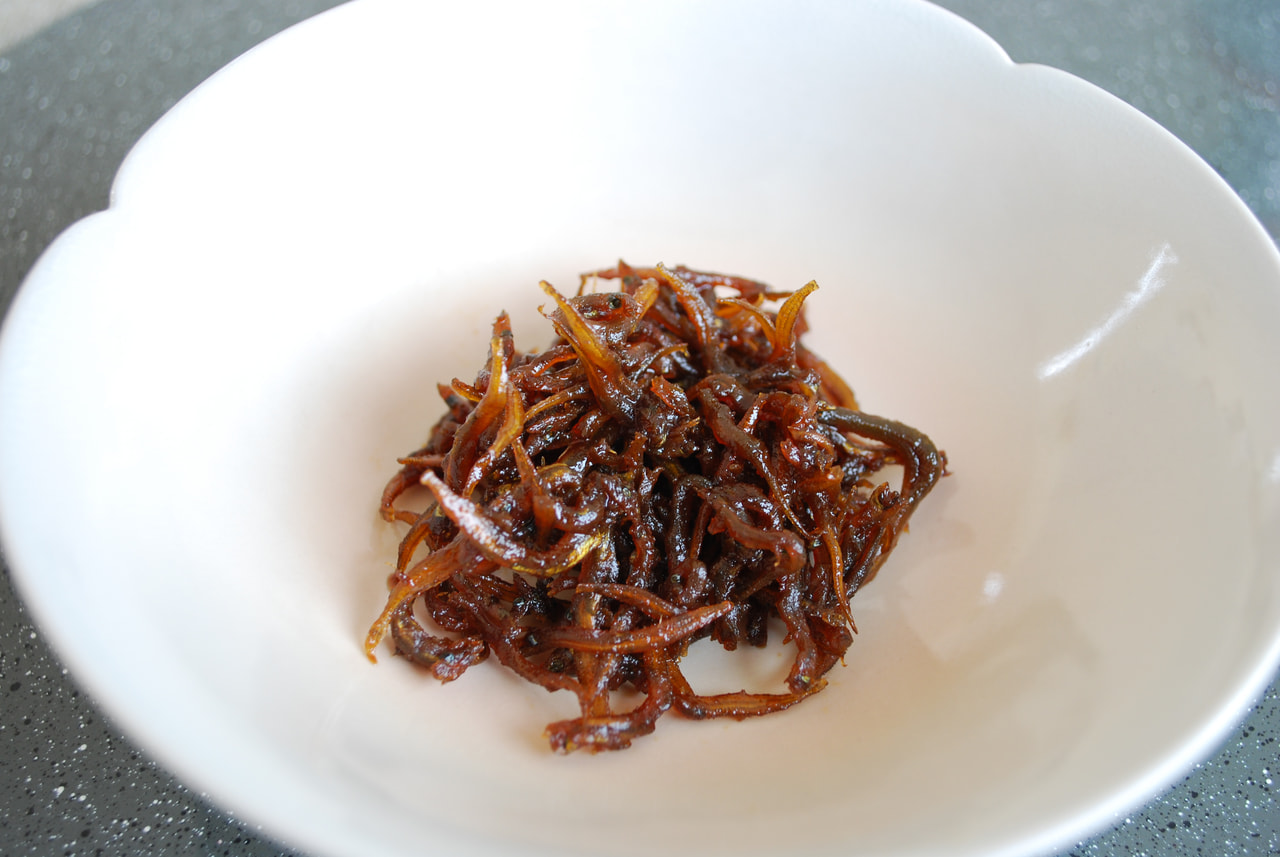Ikanago are small young sand lances that can be harvested during a limited fishing season called ikanago shinkoryou from the end of February for about a month. This time of year it is common to see fishing boats in the Seto Inland Sea.
Small ikanago, called shinko, are about three to four centimeters in length. The fish are simmered in a sweet and salty broth based on soy sauce, mirin, sugar, and ginger and is called kugini. Kugi means nails and ni means simmer. The simmered fish look like old bent nails therefore the origin of the name. Kugini can be kept for a long time and is rich in calcium. Many homes still make kugini in early spring.
The sweet and salty fish is a great match to a bowl of white rice. In the old days this combination was a source of carbohydrates and protein, an innovative dish. It is rich in umami and stimulates the appetite.



